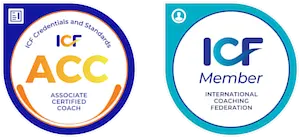As published on 3/25/22 in the Cascade Business News E-Headlines
In a family business scenario, the family business meeting might be its most powerful tool for long-term success of both the family and the family business. After all, the success of any team, hinges on its unity and ability to work well together. The interaction that happens at regularly scheduled meetings strengthens connections, deepens relationships, builds trust and brings clarity; all of which contribute to building a team and towards the longevity of a family business.
If you are responsible for planning a family business meeting and want to assure its success, it’s important to be intentional. Here are some tips.
Before The Meeting, Ask Yourself
- What’s the purpose of the meeting? Whatever it may be, keep in mind that the underlying intention is to bring people together and build alignment around purpose.
- Name the meeting. Consider literally naming the meeting, something that introduces its purpose. For example, “Family Business Meeting: Exploring New Family Business Decision Making Processes.” Or “Last Year’s Financial Review and How it Impacts You.” When the name of the meeting introduces its purpose, it’s more meaningful to each invitee.
- What type of meeting does this need to be? Now that you have sorted out the two issues above, it’s time to determine whether this a “family business meeting” or a “business family meeting.” The former relates to business issues while the latter focuses on the family issues within a business family.
If that sounds confusing, you are not alone. The lines are often blurred. And if not given enough attention, the business crowds out the family. Topics such as the upcoming family reunion or elder care for a senior member are family related topics that deserve equal attention, but outside of the business setting. The distinction is critical because the success of a family business depends largely on the cohesion of the underlying family. Be careful not to neglect the family centered issues.
- Who needs to be in attendance? Now you are ready to decide whom to invite. It might be tempting to omit those who make waves, but for the best long-term outcomes, experts will tell you, it’s important to include the whole system.
- When and where should the meeting be held? The location and the setting are key. It’s wise to select someplace neutral where no one has a home turf advantage. Allowing other family members to plan this part is a great way to gain group engagement and buy-in.
- Lastly, about a week before the meeting, be sure to circulate the agenda. Use this opportunity to kick-start engagement with a pre-meeting homework assignment. Ask for feedback, input or opinions on key agenda topics. The meeting will be more productive if members arrive ready, with some thinking already done.
On The Day of The Meeting
- Remember you are the host. You have brought people together for a purpose. Everyone is expecting you to lead. Be sure to show up ready to fulfill your leadership role. Welcome each individual and thank them for their time and attention. Show them that their attendance is valued.
- Set some rules and expectations. Begin by communicating rules around things like phones, emails and side-conversations. Explain the day’s plan, when breaks and lunch are scheduled. Explain expectations and intentions and how accountability will be managed. Set up a capable note taker to track the decisions and conclusions reached.
- Keep in mind that you cannot control the meeting’s outcome. This might be one of the hardest concepts to accept. Often leaders hold meetings to implement their ideas. Remember that the purpose of a family business meeting is to gain buy-in and build unity. That requires a much more open-minded approach.
- Promote dialogue and engagement. A meeting is not a presentation or a speech. Each person must be offered an opportunity to express their ideas in a safe environment. Only then will the best thinking emerge, and ideas will build on one another. As the host, it’s your job to facilitate that process.
- Layer your communication. Introduce the meeting topics. Tell them what you are about to talk about, talk about it and then recap what was talked about. Most people need to hear things a few times in a couple of different ways to understand it.
- Have handouts. Be sure to have something for members to take home. It could be a graph, pictures, a report or even a little gift. Hand it out early so that people closely associate it with the meeting. A tangible item will later serve as a reminder of the topics discussed.
- Wrap the meeting up with clarity. Be sure to leave enough time to conclude the meeting well. This is where the note taker’s recap is valuable. Be ready for new questions and rehashing of ideas that had been finalized.
- Review any commitments made and identify due dates. This is an opportunity to establish accountability. Be sure to clearly outline what will happen next. Too often people leave meetings without clarity on next steps.
After The Meeting
- A few days later solicit feedback. Once team or family members have had a chance to process, they will likely have some new perspective or thinking. It’s valuable to gather that. Be prepared for feedback of all kinds, both positive and negative.
If all this sounds a bit overwhelming, consider hiring a coach or facilitator to lead your family through the first few meetings. A neutral third party brings valuable planning and facilitation skills. The goal is for the family to work better together for the benefit of the family and the family business.I am a family business coach here in Central Oregon. If you run a family business, let’s connect, I’d like to help. Email me at Angelika@nullangelikaolsen.com, visit my website at angelikaolsen.com and connect with me on LinkedIn at linkedin/in/AngelikaOlsen. angelikaolsen.com



